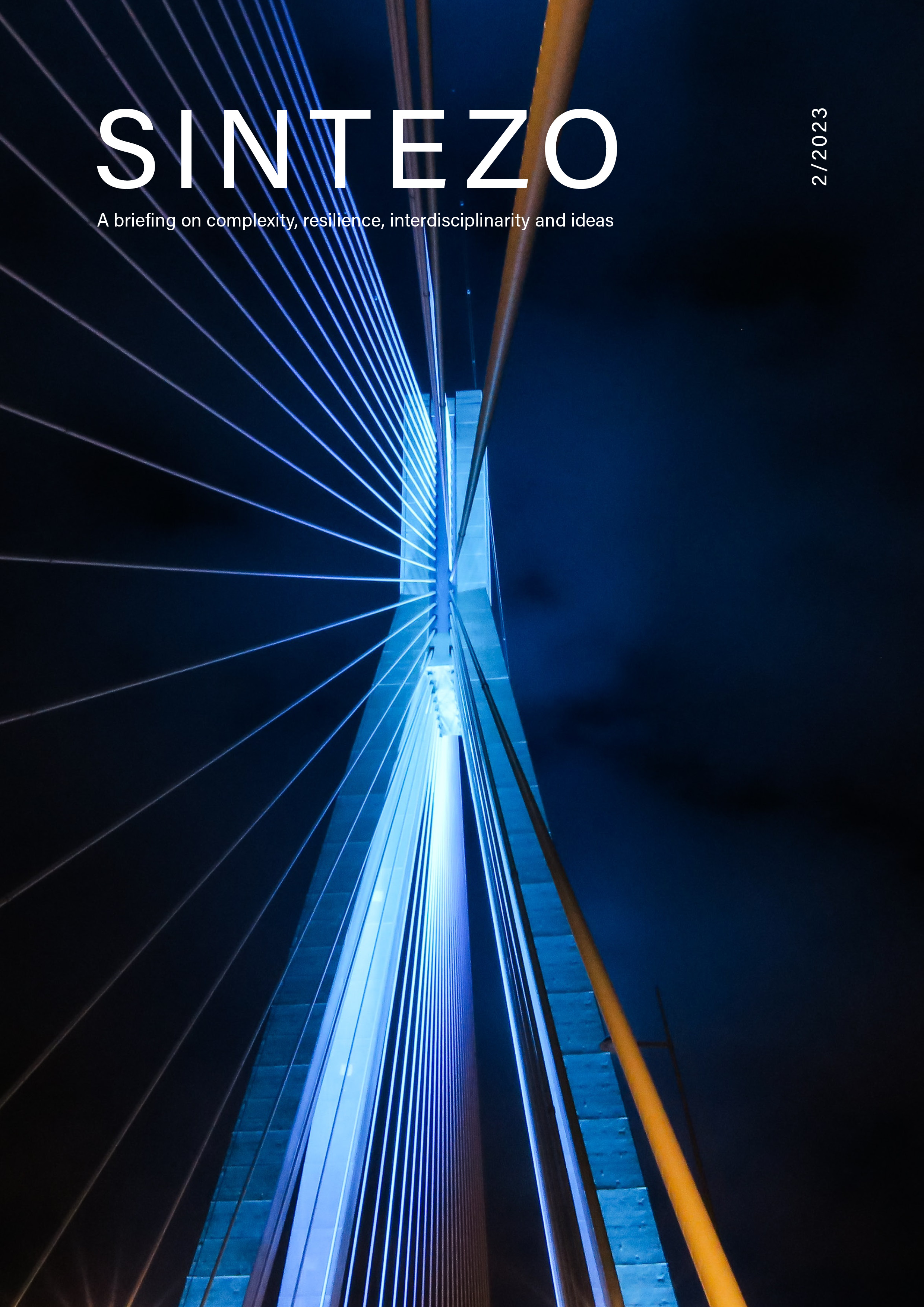03
SHOP︎
SINTEZO
Edition 3
Feburary 2023
Edition 3
Feburary 2023
» A briefing on complexity, resilience, interdisciplinarity and ideas»
A magazine is a collection of organized content, typically centred around a specific topic or theme. The word "magazine" originally referred to a warehouse, particularly a military warehouse. However, in the 18th century, it came to mean a miscellaneous pamphlet or periodical containing a variety of writings. The widespread use of the printing press played a significant role in the development and popularity of magazines as a publishing format. The first true magazine was published in Germany in the second half of the 17th century by theologian Johann Rist. From there, the magazine format spread to France, England, and other countries. This history is interesting in its own right.
One notable aspect of the history of magazines is that they did not initially aim for mass circulation. Instead, early magazine publishing focused on quality and prioritised editorial practices over quantity, which was reflected in their price. The history of magazines also highlights their resilience as a versatile tool. SINTEZO is interested in this resilience as well as utilising magazines as a means for new conversations and thinking.
We believe that evolution of the form also may offer opportunity for experimentation. For instance, magazines may experiment with a nonlinear, open-ended approach that can be as "rhizomatic thought" in their construction, deviating from the traditional logical organization of content. Rhizomatic, it is worth remembering, is cross borrowing from botany where rhizome refers to specific kind of roots that are in fact plants, such as ginger and turmeric. This approach may not be immediately logical and may be perceived as unusual or unconventional by readers.
SINTEZO recognizes the potential for unconventional curation methods, such as the use of a rhizomatic structure, to offer readers a unique and stimulating experience. The third edition of SINTEZO explores this approach by bringing together a diverse group of thinkers, leaders, practitioners, academics across Australia and the UK to present a collection of material that challenges traditional notions of creativity. This experimental approach pushes the boundaries of what readers may expect, providing a fresh perspective on the material presented.
Instructions given to contributors for the third edition of SINTEZO were intentionally open-ended, meant to provoke thought and experimentation. The goal was not to impose specific guidelines but to encourage contributors to challenge their own understanding of their craft and to approach the material in new ways. The hope is that this will spark an ongoing conversation among readers and contributors alike.
A magazine is a collection of organized content, typically centred around a specific topic or theme. The word "magazine" originally referred to a warehouse, particularly a military warehouse. However, in the 18th century, it came to mean a miscellaneous pamphlet or periodical containing a variety of writings. The widespread use of the printing press played a significant role in the development and popularity of magazines as a publishing format. The first true magazine was published in Germany in the second half of the 17th century by theologian Johann Rist. From there, the magazine format spread to France, England, and other countries. This history is interesting in its own right.
One notable aspect of the history of magazines is that they did not initially aim for mass circulation. Instead, early magazine publishing focused on quality and prioritised editorial practices over quantity, which was reflected in their price. The history of magazines also highlights their resilience as a versatile tool. SINTEZO is interested in this resilience as well as utilising magazines as a means for new conversations and thinking.
We believe that evolution of the form also may offer opportunity for experimentation. For instance, magazines may experiment with a nonlinear, open-ended approach that can be as "rhizomatic thought" in their construction, deviating from the traditional logical organization of content. Rhizomatic, it is worth remembering, is cross borrowing from botany where rhizome refers to specific kind of roots that are in fact plants, such as ginger and turmeric. This approach may not be immediately logical and may be perceived as unusual or unconventional by readers.
SINTEZO recognizes the potential for unconventional curation methods, such as the use of a rhizomatic structure, to offer readers a unique and stimulating experience. The third edition of SINTEZO explores this approach by bringing together a diverse group of thinkers, leaders, practitioners, academics across Australia and the UK to present a collection of material that challenges traditional notions of creativity. This experimental approach pushes the boundaries of what readers may expect, providing a fresh perspective on the material presented.
Instructions given to contributors for the third edition of SINTEZO were intentionally open-ended, meant to provoke thought and experimentation. The goal was not to impose specific guidelines but to encourage contributors to challenge their own understanding of their craft and to approach the material in new ways. The hope is that this will spark an ongoing conversation among readers and contributors alike.
Jelenko Dragisic
Caroline Austin
Editorial team
February 2023
Caroline Austin
Editorial team
February 2023
